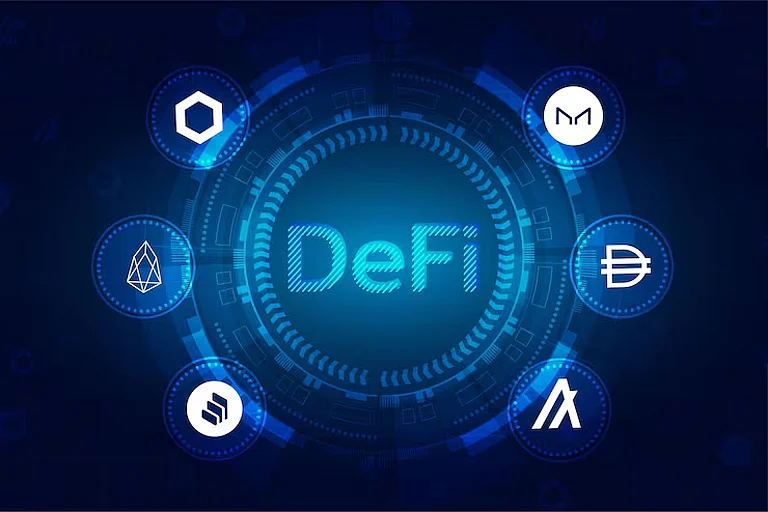As blockchain innovation advances, one of the ideas picking up fast is the appchain — application-specific blockchain in short. In contrast to conventional blockchains that support various decentralized applications (dApps) on a common network (such as Ethereum or Solana), appchains are bespoke blockchains built for one purpose or ecosystem.
But beneath every appchain is a fundamental question: what infrastructure layer does one need to host it?
The solution extends beyond servers or cloud hosting — it is a multi-layer architecture that combines blockchain frameworks, consensus mechanisms, node infrastructure, interoperability bridges, and smart contract environments. The layered configuration has the appchains running independently yet connected to an extended blockchain network.
In this article, we’ll explore the full picture — what infrastructure layers power appchains, their core components, how they differ from general-purpose blockchains, and the practical steps to build one.
What Is an Appchain and Why Does Infrastructure Matter?
An appchain is a blockchain tailored to a particular application or use case. Imagine creating your own blockchain "mini-universe" — you can customize everything from its rules of consensus to governance and tokenomics.
But none of that is possible without the proper infrastructure layer. This underlying setup determines how the appchain will function, scale, and engage with other networks.
There are several key reasons why infrastructure is important for appchains:
Performance Optimization: Resource allocation to a particular app makes transactions quicker and less congested.
Scalability: Layers of infrastructure enable the addition or replacement of elements as the demand increases.
Security: A solid setup protects apps from network threats and data alterations.
Interoperability: Efficient infrastructure enables seamless communication of appchains with parent or other chains.
The Core Infrastructure Layers Needed to Operate an Appchain
Operating an appchain necessitates a multilayered architecture. Each layer has a distinct function — from execution to consensus to data availability.
Let's dissect these fundamental infrastructure layers:
Layer 0: The Networking and Interoperability Layer
The foundation of all blockchain networks. It governs the inter-node communication and how blockchains interoperate.
Chief building blocks:
Interoperability protocols: Enable interaction between various chains (e.g., IBC for Cosmos, Polkadot's Relay Chain).
Node connectivity: Enables nodes to communicate effectively and stay in sync.
Bridge infrastructure: Enables token transfers and data exchange between ecosystems.
Purpose: Appchains would be isolated — with no way to talk to other ecosystems — if there were no Layer 0.
Layer 1: The Base Blockchain Layer
This layer supplies the underlying consensus and validation frameworks. It specifies the rules upon which the appchain functions.
Shared infrastructure tools and frameworks:
Cosmos SDK: For developing appchains that exchange data with one another via IBC.
Substrate: Framework for Polkadot-based appchains (parachains).
Avalanche Subnets: Autonomous networks within the Avalanche network.
Roles: Command validators and consensus (Proof of Stake, Delegated Proof of Stake, etc.)
Moderate transactions and data storage on the blockchain.
Carry out the base token and economic model.
Layer 2: Execution and Scalability Layer
This layer is responsible for transaction processing and logic. Most applications use appchains as Layer 2 protocols over current Layer 1 blockchains.
Purpose:
Enhance scalability due to computation offloading from the main chain.
Lower gas prices and enhance throughput.
Examples:
Systems like Rollups can be used to power appchains.
Execution environments like EVM or WASM enable developers to execute smart contracts with efficiency.
Layer 3: Application Layer
This is where the magic happens. This is where the layer the end users interact with — through wallets, dApps, or APIs.
Core parts:
Smart contracts or dApp logic.
Developer APIs and SDKs.
User interface and wallets.
Why it matters:
Well-architected application layers facilitate smooth communication with the blockchain backend, resulting in improved user experience and accessibility.
Layer 4: Infrastructure Support Layer (Cloud, Nodes & DevOps)
This operational level is responsible for the blockchain actually being deployed on physical or cloud infrastructure.
Includes:
Node infrastructure: Validator nodes, RPC nodes, and full nodes.
Hosting: Cloud hosts such as AWS, Google Cloud, or decentralized hosting (Akamai, Akash).
Monitoring tools: Grafana, Prometheus, or Tenderduty for node health.
Tip: Increasingly, developers are using Rollup-as-a-Service or Appchain-as-a-Service platforms to make setup and management easier.
How to Install Infrastructure for an Appchain
Building a robust appchain infrastructure requires technical and architectural choices. Here is a simplified roadmap:
Choose Your Framework: Choose between Cosmos SDK, Substrate, Avalanche Subnets, or modular Rollup system.
Designate Your Consensus: Select a consensus algorithm — Proof of Stake (PoS) or Delegated Proof of Stake (DPoS).
Set Up Nodes: Deploy validator, full, and seed nodes for network stability.
Set Up Interoperability: Connect your appchain with other chains using IBC or cross-chain bridges.
Host Cloud or On-Prem Infrastructure: Host secure and scalable infrastructure.
Monitor and Scale: Use observability tools to monitor performance and scale up with increasing demand.
Appchain Infrastructure Development Pros and Cons
Pros
Tailor-made: Complete ownership of governance and transaction logic.
Performance: Cheaper and quicker than public blockchains.
Security Segregation: Errors in one appchain do not impact others.
Interoperability: Capable of interoperability with multiple chains without being standalone.
Cons
Extremely Complicated Setup: Technical expertise required.
Maintenance: Increased node maintenance and updating burden.
Smaller Validator Set: Could result in potential security trade-offs for smaller networks.
Appchain Infrastructure vs. Traditional Blockchain Infrastructure
Aspect | Appchain Infrastructure | Traditional Blockchain Infrastructure |
Purpose | Tailored for a specific application | Shared among many dApps |
Scalability | Independent scaling | Limited by shared network resources |
Governance | Customizable | Controlled by main chain community |
Security | Isolated from other chains | Dependent on main network security |
Interoperability | High (via bridges/IBC) | Often limited |
Conclusion: Building the Backbone of the Next Blockchain Era
Appchains represent the next chapter in blockchain and cryptocurrency evolution — specialized, efficient, and purpose-built. But their success hinges on one critical foundation: infrastructure.
A well-designed infrastructure layer doesn’t just support an appchain’s operations — it defines its scalability, performance, and interoperability. From the networking protocols that connect chains to the node architecture that keeps them running, every component plays a vital role.
As blockchain ecosystems mature, the focus will shift from building general-purpose platforms to developing infrastructure-rich appchains — purpose-built networks designed to power tomorrow’s decentralized applications with precision, autonomy, and speed.
FAQs: Common Questions About Appchain Infrastructure
Q1. What is the primary infrastructure layer needed to run an appchain?
The base infrastructure layer is the Layer 1 (Base Blockchain Layer), which defines consensus, transaction validation, and tokenomics. However, all five layers together ensure full functionality.
Q2. Can I host an appchain on the cloud?
Yes. Cloud platforms like AWS or Google Cloud are often used for hosting validator nodes and APIs, though decentralized hosting solutions are emerging as alternatives.
Q3. What are examples of frameworks for building appchains?
Popular ones include Cosmos SDK, Substrate (Polkadot), and Avalanche Subnets. Each offers modular components for customization.
Q4. How does interoperability work in appchains?
Through Layer 0 infrastructure, using protocols like IBC or Polkadot Relay Chains, appchains can exchange data and tokens with other blockchains seamlessly.
Q5. Do appchains require their own tokens?
Not necessarily. Some appchains issue native tokens for governance and fees, while others rely on parent chain tokens.

























